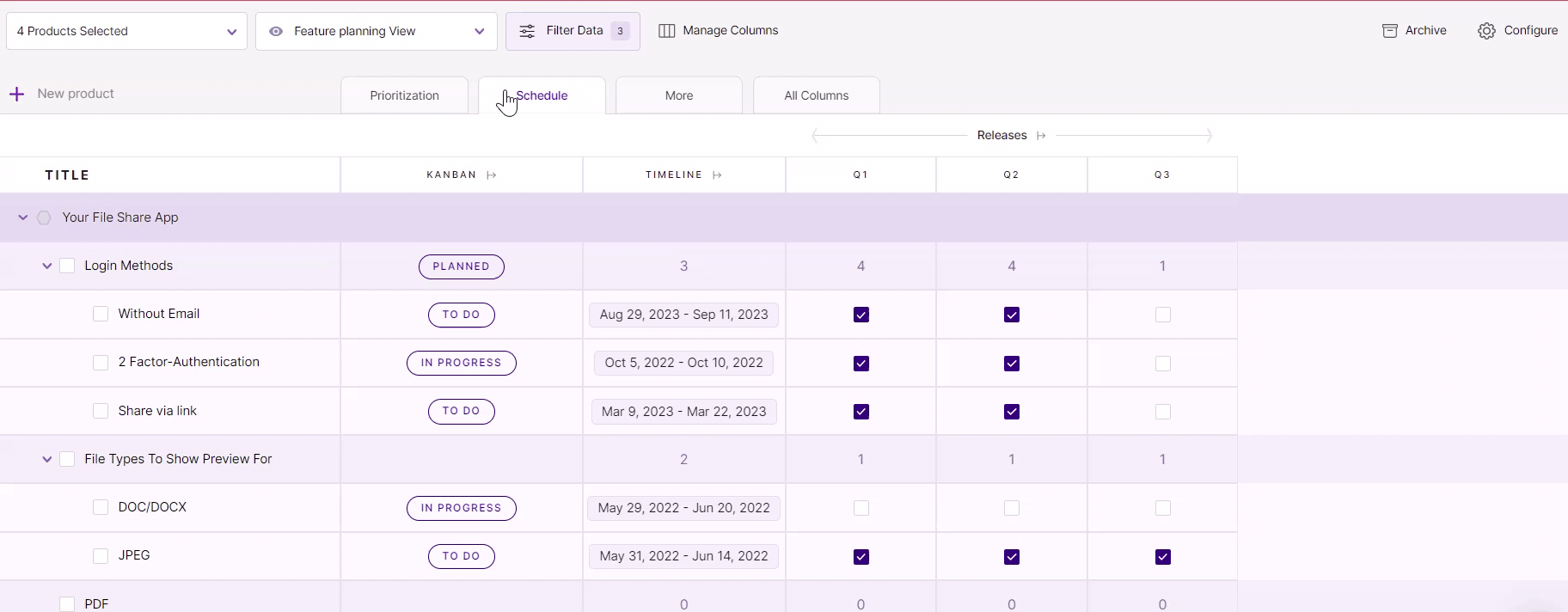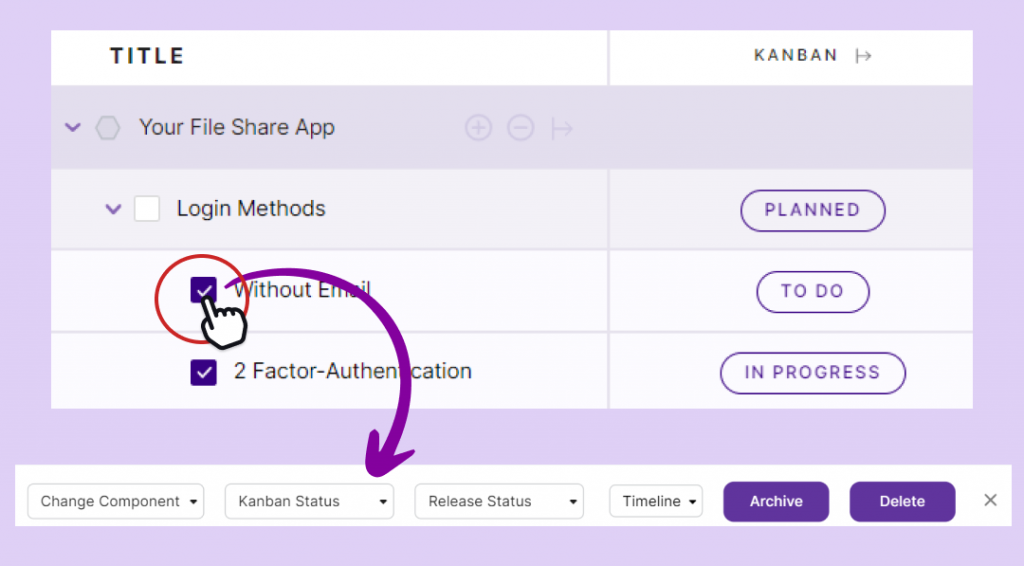Defining Kanban Status
This article covers:
What Is Kanban Status?
A product management tool like kanban guides teams in visualizing their work, thereby maximizing efficiency.
A kanban status is a visual representation of the item’s current state. You can use it to show the progress of a project or to show where you are in the process.
You can identify where bottlenecks exist or where teams need more resources through the kanban status.
It is also an excellent tool for teamwork, as it allows everyone to see how much work each team member has on their plate and how much they’ve accomplished so far.
Different Types of Statuses
To your Kanban board, you can add different types of statuses. For example, candidate, planned, in progress, and release.
You have the flexibility to edit or name them as per your choice.
Kanban status will be visible in the Components and Features side panel.
How to Add/Remove or Customize Kanban Status?
Now that we know what each kanban statuses mean, let’s get started with how you can access, add, delete or customize them.
- To access ‘Kanban View,’ go to the ‘Feature Treeview’ page.
- Here click on the ‘Schedule’ tab.

- Follow this up by expanding the ‘Kanban’ option.
- Click on the ‘Add another kanban status’ bar to add a new kanban status.

- Now enter the kanban status title in the given box and press enter to save it.
- To edit the already existing Kanban title, simply click on the title.
- Click on the ‘close’ icon next to the kanban title to delete a kanban status.
- To hide the ‘kanban’ status from the treeview page, toggle off the button at the top.

- Go to the ‘Visible columns’ tab at the top of the treeview page, To make the ‘Kanban’ status tab visible again. Here, in ‘Customizable Headers’ toggle on the ‘Kanban status.
Kanban View
- To access more details for every component and feature of the kanban status, go to the ‘Kanban’ view.
- Here, you can see every component and feature in the particular kanban statuses you have put them into.
- Click on the ‘expand’ icon to view feature actions such as members, labels, and details like prioritization, schedule, dependencies, and so on.

4. Click on the checklist box to view info such as kanban and release statuses, components, and archive and delete feature options.
